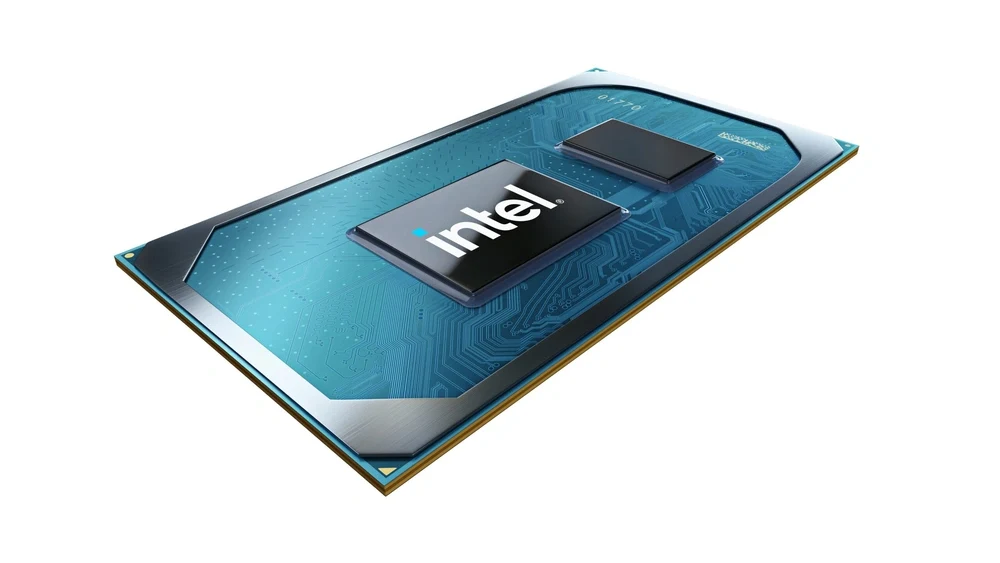The Intel Iris Xe Graphics G7 is impressive in its efforts to balance high performance with integrated functionality, particularly when benchmarked against the likes of the Nvidia GeForce RTX series. Intel’s Iris Xe series provides the upper hand when it comes to integrated graphics, often outperforming its Nvidia counterparts in a few specific tasks.
The Iris Xe Graphics G7 96EUs, for instance, is a compelling model, offering a level of power that challenges even the Nvidia GeForce GTX
The Nvidia GeForce RTX 3070, on the other hand, stands as a testament to Nvidia’s dedication to pushing the boundaries of graphic processing units (GPUs). As a high-end product, the Nvidia GeForce RTX outperforms the Intel Iris XE Graphics G7 in various benchmark tests, marking an evident difference in the graphical performance.
Understanding Intel Iris XE and Nvidia Graphics
Iris XE graphics offer an affordable alternative without significantly compromising the gaming experience, even when user benchmarks for the Intel counterpart are compared with high-end GPUs like NVIDIA’s RTX series. When it comes to video editing and other graphic-intensive tasks, the dedicated graphics card feature in Nvidia GPUs provides an additional advantage.
Meanwhile, the Intel Iris XE graphics power laptops equipped with the latest i7 and i5 processors, offering an integrated solution that caters to various users’ graphic needs. While deciding on a laptop purchase based on graphics power, the buyer must consider their specific needs.
If high-performance gaming and intensive graphic works are a priority, Nvidia, with its RTX and GTX series, would be the ideal choice. On the other hand, for routine tasks and casual gaming, Intel Iris XE allows for a cost-effective solution with user benchmarks showing comparable performance to some lower-end Nvidia GPUs.
Intel Iris XE Graphics G7 vs Nvidia GeForce: A Comparison

Exploring the technical powerhouses of our generation, the Iris XE Graphics G7 from Intel and Nvidia’s GeForce, can provide a revealing understanding of the capabilities and performance differences between the Iris XE Graphics G7 96EUs and GeForce RTX series. The G7, especially the 96EUs variant of Iris XE Graphics G7, presents substantial competition to GeForce in a multitude of applications.
For instance, G7 proves advantageous for graphic designers who work with extensive software suites due to its significant memory and processing abilities.
On the other hand, Nvidia’s GeForce excels for large-scale, graphically demanding gaming applications, mainly due to its dedicated graphics card.
The next factor to consider is compatibility. Nvidia GeForce often excels in systems with AMD processors, while Intel’s Iris XE Graphics G7 matches perfectly with the most recent i7, creating a comparison of Graphics G7 96EUs vs Nvidia GeForce RTX that reveals the subtle strengths of each.
Iris XE Graphics G7 and Nvidia’s GeForce
- The Iris XE Graphics G7, particularly the 96EUs variant, offers strong competition to GeForce in various applications.
- Iris XE Graphics G7 is especially beneficial for graphic designers who use extensive software suites, thanks to its impressive memory and processing capabilities.
- Nvidia’s GeForce is superior for large-scale, graphically-intensive gaming applications, largely due to its dedicated graphics card.
- While Nvidia GeForce often performs better in systems with AMD processors, Intel’s Iris XE Graphics G7 pairs perfectly with the latest i7 processors.
Performance Benchmarks: Intel Iris XE vs Nvidia
Delving into the world of high-performance graphic cards, the battle lines are drawn between Nvidia’s diverse and powerful offerings, such as the cutting-edge Nvidia GeForce RTX 3070 and GTX 1650, and Intel’s potent options including the highly-capable i7 1165g7 processor with Intel Iris Xe graphics. = Nvidia’s cards are often celebrated for their prowess in gaming environments, due to their GDDR6 memory, which handles graphic-intensive applications with relative ease.
On the other hand, Intel’s Iris XE thrives in diverse settings, accommodating extensive software suites like a charm, particularly when paired with the i7 1165g7 processor. Whether it’s the Nvidia GeForce RTX 3070 with its impressive GDDR6 memory, or the Intel Iris XE which pairs seamlessly with an i7 1165G7 processor, the exploration of these graphic cards offers an impressive journey through the world of high-end technology.
Nvidia GeForce RTX 3070 vs Intel Iris XE Graphics G7

When it comes to graphics cards, Nvidia GeForce RTX 3070 stands prominent due to its exceptional performance capabilities. It frequently outperforms other competitors such as Intel Iris XE Graphics G7 in benchmark testing and gaming. This robust graphics card can handle any game, delivering remarkable frame rates in graphics-intensive situations.
On the other hand, Intel Iris XE Graphics G7 is a strong competitor, providing compatibility across a wide range of systems and software suites.
Although it doesn’t quite reach the RTX 3070 in sheer performance, it makes up for this with lower energy use and a more affordable price point.
The frequently posed question is: ‘GeForce RTX or Iris XE Graphics’? The response to this largely depends on the user’s individual requirements, budget, and specific applications. ‘The Intel Iris Xe Graphics G7 frequently tops the best user-rated lists in benchmark tests, often competing closely with the Nvidia GeForce RTX in gaming performance. This proves that choosing either has its advantages.
Graphics Cards Performance
- Nvidia GeForce RTX 3070 frequently outperforms other competitors in benchmark testing and gaming.
- The GeForce RTX 3070 graphics card can handle any game, delivering exceptional frame rates in graphics-intensive situations.
- Intel Iris XE Graphics G7 provides compatibility across a wide range of systems and software suites.
- Despite not reaching the RTX 3070 in sheer performance, the Intel Iris XE Graphics G7 compensates with lower energy use and a more affordable price point.
User Experience: Intel Iris XE vs Nvidia Graphics


With regard to technological advancements, both Nvidia and Intel are continually evolving to meet increased demands, evident in their latest releases, the Nvidia GeForce RTX 3070 graphics card and Intel’s Iris Xe Graphics G7 96EUs. For instance, Nvidia’s MX350 manages to perform significantly better than Intel’s i7-1165G7 integrated GPU, although not as effective as its high-end counterparts such as the RTX series.
When choosing between Intel Iris XE Graphics and Nvidia GeForce for gaming, it is essential to consider the kind of games you plan to play. Intel Iris XE Graphics may suffice for casual gaming or older game titles.
For the latest and more demanding games, the sheer power of Nvidia’s GeForce, particularly the 3070 model, cannot be overlooked. Nvidia’s offerings come with a dedicated graphics card, particularly the Nvidia GeForce RTX 3070, which outperforms its Intel counterparts like the Iris Xe Graphics G7 96EUs in GPU-intensive tasks.
Advanced Features in Intel Iris XE and Nvidia GPUs
Providing a riveting competition with their unique strong suits in different areas, the Nvidia GeForce GTX and AMD i7 processors continually battle in the world of gaming. These two offerings keep fanatics on edge with fluctuating benchmarks and varying CPU capabilities. For instance, the Intel Iris XE graphics deliver competitive performance on titles optimized for integrated GPUs, while Nvidia’s GeForce RTX 3070 triumphs in AAA gaming titles, due to its high-end features and raw grunt.
The Nvidia GeForce RTX 3070 also showcases superior performance in the world of 3D rendering and hardware-intensive tasks, thanks to its GDDR6 memory and Ampere architecture.
Ultimately, choosing between Intel and Nvidia for your graphic needs depends on the specific requirements and preferences.
For video editing, rendering, and hardcore gaming, Nvidia GPUs offer superior performance. On the contrary, users looking for efficient GPUs may prefer the Nvidia Geforce GTX due to its superior results in gaming applications.
Graphic Processors
- The Nvidia GeForce RTX 3070 delivers superior performance in 3D rendering and hardware-intensive tasks due to its GDDR6 memory and Ampere architecture.
- Intel Iris XE graphics offer competitive performance on titles optimized for integrated GPUs.
- For tasks such as video editing, rendering, and hardcore gaming, Nvidia GPUs offer superior performance.
- The Nvidia GeForce GTX is preferred by users looking for efficient GPUs due to its superior benchmark results in gaming applications.
Gaming Performance: Nvidia vs Intel Iris XE


The performance of the high-end Nvidia GeForce RTX 3070 significantly outpaces that of the Intel Iris Xe Graphics G7, particularly in graphics-heavy tasks. Its impressive features include 96 Execution Units (EUs) and a clock speed of 3 GHz.
While it may not compare to the RTX 3070 in raw performance, for most mainstream gaming applications, it offers more than enough power. The RTX 3070 scores highly in user benchmarks, especially in high-end gaming and 3D rendering tasks.
Meanwhile, the Iris XE G7, designed for efficiency and integrated graphics applications, also scores respectably in user benchmarks. It truly shines in lower TDP environments due to its efficient architecture.
Comparing Nvidia and Intel graphic cards also requires consideration of the different applications they are designed for.
Integrated vs Dedicated Graphics: Intel Iris XE and Nvidia
It’s no secret that Nvidia’s dedicated graphics, specifically the GTX 1650, often outperform Intel’s Iris XE graphics. That being said, the Intel’s Iris XE graphics is not far behind when it comes to handling modern games, especially when paired with a robust CPU.
The Nvidia GeForce RTX 3070, one of the most popular graphics cards among gamers, boasts high-performance capabilities, efficient video editing, and exceptional 3D rendering.
It requires a more powerful system to fully utilize its potential, setting it apart from the integrated, less power-demanding Iris XE.
Compared to the Nvidia GeForce GTX 1650, the Intel Iris XE scores decent points in benchmark tests, although the dedicated graphics card still holds an edge in terms of overall gaming experience. Yet, when comparing the G7 96EUS vs Nvidia Geforce, the latter easily provides superior dedicated graphics.
| Nvidia GeForce GTX 1650 | Intel’s Iris XE |
|---|---|
| Often outperforms Intel’s Iris XE in high-end gaming performance | Not far behind in handling modern games, especially when paired with a robust CPU |
| Requires a more powerful system to fully utilize its potential | Integrated and less power-demanding, making it suitable for less powerful systems |
| Holds an edge in terms of overall gaming experience | Scores decent points in benchmark tests, showing competitive performance |
Intel Iris XE Graphics in Modern Gaming
The Nvidia GTX 1050’s dedicated graphics card can maintain the frames per second (fps) exceptionally well even when games’ settings are set high. With this in mind, it’s essential to remember that graphics capacity is just one aspect of gaming.
For an optimal experience, gamers must consider other components such as the CPU and RAM. A high-performing Intel i5 or i7 processor and sufficient RAM complement the graphics card capability to deliver an all-rounded gaming experience.
For those considering upgrading their graphics cards or buying a new laptop, the Intel Iris XE Graphics is a worthy option that ensures cost-effectiveness without compromising on performance. If high-end gaming is the goal, then dedicated graphics cards like Nvidia GeForce may prove more satisfactory. Observing user benchmarks and gaming forums, the Intel Iris XE has received positive reviews especially when compared to the likes of Nvidia GTX 1050 and RTX 2060, for its performance in video editing and its competitive edge as a dedicated graphics card.
Video Editing with Intel Iris XE and Nvidia Graphics


An examination of the capabilities and distinctions between the Intel Iris XE and Nvidia Graphics in terms of video editing reveals that Nvidia is far superior for effective 3D rendering, although the integrated GPU of the 11th gen i7 1165g7 is often a viable alternative for less demanding use.
Equipped with the 11th geni7 1165g7 processor, the Iris XE also stands as an effective 3D tool suitable for both hobbyist editors and seasoned professionals. Despite Iris XE’s robust integration as a GPU, discussions continue regarding which graphics card is better.
Nvidia has consistently showcased high performance in video editing tasks, a feat made possible by their dedicated graphics infrastructure. According to performance tests conducted on both Intel Iris XE and Nvidia, various benefits are apparent depending on whether a user values effective 3D graphics processing or integrated GPU functionality. Benchmarks for the Intel Iris XE on the 11th gen i7 1165g7 show it to be faster than Intel’s previous generations, though the Nvidia graphics card is generally better for games using high-resolution graphics.
Key Insights from the Comparison of Intel Iris XE and Nvidia Graphics
- The Nvidia graphics card demonstrates superior performance for effective 3D rendering, as per user benchmarks.
- The integrated GPU of the 11th gen i7 1165g7, equipped with the Intel Iris XE, is a viable alternative for less demanding use.
- Despite the robust integration of Iris XE as a GPU, Nvidia consistently showcases high performance in video editing tasks due to its dedicated graphics infrastructure.
- Performance tests reveal that the Intel Iris XE on the 11th gen i7 1165g7 is faster than Intel’s previous generations, however, the Nvidia graphics card is generally better for games using high-resolution graphics.
FAQ about Intel Iris XE and Nvidia Graphics Cards
CPU performance is a crucial consideration for modern gamers, especially when deciding to buy a laptop with a dedicated GeForce card for high-performance graphics. The GeForce cards like the RTX 2060 and GTX 1650 are a go-to for those seeking impeccable gaming performance at high rendering speeds.
They have dedicated GeForce GDDR6 memory, unlike the shared memory system of the Iris XE. When pitted against each other, it is found that Nvidia’s cards often outperform Intel’s Iris XE.
The gap narrows down when it comes to video editing and other non-gaming performance tasks. The Iris XE delivers satisfactory performance by handling these tasks efficiently.
For more specialized tasks like 3D modeling, Nvidia cards have a clear edge with their dedicated RTX architecture. But for those on a tight budget, the Iris XE proves to be a good option, delivering acceptable gaming performance for modern games, despite not having a dedicated GeForce graphics card or high-performance hardware like the i5 11th gen or Intel i.
Choosing Between Intel Iris XE and Nvidia for High-End Gaming

The Tiger Lake CPU struggles to maintain a consistent 60fps even under lower settings, making Nvidia a preferred choice for high-performance gaming, particularly when playing new games or using the best 713 GPUs. However, the Iris XE isn’t completely outdone.
Its impressive 3D benchmark results prove that it’s capable of effective 3D rendering, giving it the upper hand in certain applications, such as video editing.
Equipped with Intel’s latest 11th Gen, the Iris XE is integrated into the CPU, offering a cost-effective alternative to Nvidia’s dedicated GeForce graphics card.
The final verdict? Hardcore gamers with a focus on high frame rate and streaming will find Nvidia’s offerings more appealing. For casual gamers and video editors who need a cost-effective solution, the Iris XE proves to be a worthy contender.
| Nvidia GeForce Graphics Card | Intel Iris XE |
|---|---|
| Struggles to maintain a consistent 60fps under lower settings | Impressive 3D benchmark results |
| Preferred for high-performance gaming | Effective for 3D rendering and video editing |
| Best choice for hardcore gamers and streamers | Cost-effective solution for casual gamers and video editors |




